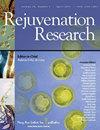蟛蜞菊内酯通过抑制 Hippo 通路减轻肝纤维化和肝星状细胞活化。
IF 2.6
4区 医学
Q3 GERIATRICS & GERONTOLOGY
引用次数: 0
摘要
肝纤维化是一种常见的病理现象,发生在各种慢性肝病的进展过程中。Hippo通路与肝纤维化的发病机制密切相关。以往的研究表明,蟛蜞菊内酯(WED)具有显著的抗肝纤维化作用,但其作用靶点和机制仍不明确。在本研究中,我们发现 WED 可通过抑制 YAP 和 TAZ 的表达来显著缓解肝纤维化和肝损伤。在体外模型中,WED抑制了TGF-β1诱导的肝星状细胞(HSCs)的活化,以及α-SMA、YAP和TAZ的mRNA和蛋白表达。利用 MD 和 CETSA 证实了 WED 对 YAP 的异生调控作用。此外,特异性敲除或抑制 YAP 并不能增强 WED 对造血干细胞活化或与纤维化相关的蛋白表达的抑制作用。这些研究结果表明,服用WED可通过抑制Hippo/YAP/TAZ通路有效缓解肝纤维化。此外,WED可能通过异构调节来调节YAP的活性。本文章由计算机程序翻译,如有差异,请以英文原文为准。
Wedelolactone attenuates liver fibrosis and hepatic stellate cell activation by suppressing the Hippo pathway.
Liver fibrosis is a commonly observed pathological phenomenon that occurs during the progression of various types of chronic liver diseases. The Hippo pathway is closely associated with the pathogenesis of liver fibrosis. Previous studies have shown that wedelolactone (WED) has a significant anti-hepatic fibrosis effect, whereas the target and mechanism underlying WED remain elusive. In this study, we found that WED significantly alleviated liver fibrosis and injury by inhibiting the expression of YAP and TAZ. In an in vitro model, WED suppressed the activation of hepatic stellate cells (HSCs) induced by TGF-β1, as well as the mRNA and protein expression of α-SMA, YAP, and TAZ. The allosteric regulation of YAP by WED was confirmed using MD and CETSA. Moreover, specific knockdown or inhibition of YAP did not enhance the suppressive effect of WED on HSC activation or protein expression associated with fibrosis. These findings demonstrated that the administration of WED effectively alleviated liver fibrosis by suppressing the Hippo/YAP/TAZ pathways. In addition, YAP activity may be regulated by WED via allosteric regulation.
求助全文
通过发布文献求助,成功后即可免费获取论文全文。
去求助
来源期刊

Rejuvenation research
医学-老年医学
CiteScore
4.50
自引率
0.00%
发文量
41
审稿时长
3 months
期刊介绍:
Rejuvenation Research publishes cutting-edge, peer-reviewed research on rejuvenation therapies in the laboratory and the clinic. The Journal focuses on key explorations and advances that may ultimately contribute to slowing or reversing the aging process, and covers topics such as cardiovascular aging, DNA damage and repair, cloning, and cell immortalization and senescence.
Rejuvenation Research coverage includes:
Cell immortalization and senescence
Pluripotent stem cells
DNA damage/repair
Gene targeting, gene therapy, and genomics
Growth factors and nutrient supply/sensing
Immunosenescence
Comparative biology of aging
Tissue engineering
Late-life pathologies (cardiovascular, neurodegenerative and others)
Public policy and social context.
 求助内容:
求助内容: 应助结果提醒方式:
应助结果提醒方式:


